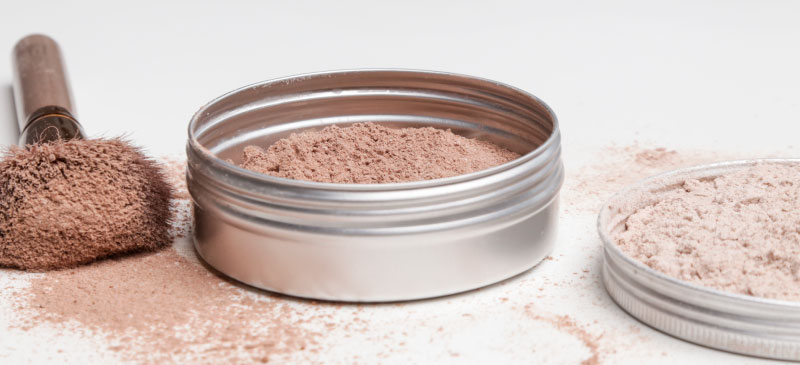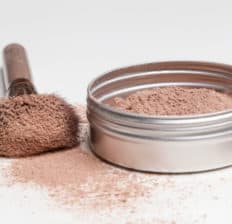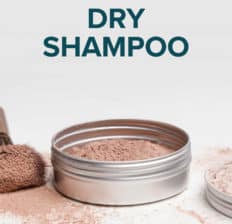This Dr. Axe content is medically reviewed or fact checked to ensure factually accurate information.
With strict editorial sourcing guidelines, we only link to academic research institutions, reputable media sites and, when research is available, medically peer-reviewed studies. Note that the numbers in parentheses (1, 2, etc.) are clickable links to these studies.
The information in our articles is NOT intended to replace a one-on-one relationship with a qualified health care professional and is not intended as medical advice.
This article is based on scientific evidence, written by experts and fact checked by our trained editorial staff. Note that the numbers in parentheses (1, 2, etc.) are clickable links to medically peer-reviewed studies.
Our team includes licensed nutritionists and dietitians, certified health education specialists, as well as certified strength and conditioning specialists, personal trainers and corrective exercise specialists. Our team aims to be not only thorough with its research, but also objective and unbiased.
The information in our articles is NOT intended to replace a one-on-one relationship with a qualified health care professional and is not intended as medical advice.
DIY Dry Shampoo Recipe (Plus How to Use It)
August 24, 2023

How many times have you been in a big hurry and needed to wash your hair but just did not have the time? It happens to everyone. What if there was a convenient way to have fresh hair without getting it wet? Well, there is: It’s called dry shampoo.
Dry shampoos are very convenient because you can take them with you anywhere you go. You can even freshen up the kids in a pinch!
But rather than buying a dry shampoo, you can make a much healthier version for your hair at home. This DIY dry shampoo recipe is loaded with benefit-rich essential oils like lavender oil and peppermint oil, plus other healthy ingredients depending on your hair color.
What Is Dry Shampoo?
Dry shampoo is a hair care product that is designed to refresh and clean your hair without the need for water. It typically comes in the form of a spray or powder and is applied directly to the roots of your hair.
Dry shampoo works by absorbing excess oil, sweat and dirt from your scalp and hair, giving the appearance of freshly washed hair even when you haven’t had a traditional shampoo and water wash.
Dry shampoo typically contains ingredients like starches, clays or powders that have absorbent properties. These ingredients help to soak up the oils and impurities, making your hair look less greasy and more voluminous.
Some dry shampoos also contain fragrances that can help mask any unwanted odors in your hair.
Dry shampoos have been around for a while. Minipoo Dry Shampoo was produced from the early 1940s through the late 1960s.
The National Museum of American History actually has a display of Minipoo, which mainly targeted women. Advertisements claimed that it could be used while sick in bed.
Known as the 10-minute dry shampoo that was convenient for “surprise dates,” Minipoo was also safe for kids because no soap would get in their eyes. Its slogan was” “When you can’t shampoo, Minipoo.”
Dry shampoos also showed up in the 1960s when famous model, actress and singer Twiggy starred in an early ad.
How Does It Work?
Basically, a dry shampoo soaks up excess oil (that makes for greasy hair) between shampoos, giving longer life to hairstyles or simply providing a way to freshen up. The DIY dry shampoo recipe below can help lift the roots and provide a matte finish versus an oily appearance.
Hair stylists are all for it, especially if they’re going to do an up-do for a wedding or special event. In fact, it’s common for them to ask you to not wash you hair for several days before coming into the salon so it’s easier to manage and massage into that perfect hair style.
This is the time when a dry shampoo can help get you through those dirty hair days!
Who is dry shampoo for? It can be for anyone!
Men, women and children on the go can benefit from this handy product. For athletes, this is really useful.
It’s even helpful for the mom or dad who really wants to get that daily workout in but has very little time to make it happen.
When every second counts, a dry shampoo may be in order.
Key Ingredients
As you can see in the below recipe for a DIY dry shampoo, the main ingredients vary depending on your hair color. If you use arrowroot powder or cornstarch, it may initially look very white on your hair. This is why those ingredients are ultimately best for lighter hair colors.
Meanwhile, cocoa or cinnamon powder is best for dark hair.
When choosing between arrowroot or cornstarch, the former is better because, unlike cornstarch, arrowroot powder is harvested from the tubers of its plant without the use of harsh chemicals or high heat. Plus, arrowroot powder is loaded with nutrients.
The two essential oils also have excellent hair-healing properties and are some of the best essential oils for hair. Lavender oil has been used for medicinal and religious purposes for over 2,500 years. It benefits the hair and the scalp because of its antimicrobial and antioxidant characteristics.
Peppermint oil is an excellent stimulant to energize you while you shampoo — plus it’s a powerful antiseptic and can help remove dandruff and lice.
Lastly, while it may vary for many, it’s probably time to wash your your hair after a third application.
How to Make a DIY Dry Shampoo
Making this DIY dry shampoo recipe couldn’t be easier. In fact, it takes just five minutes.
Simply blend all the ingredients in a small bowl or container with a lid.
Then, to use this DIY dry shampoo, sprinkle the mixture onto your scalp and roots of your hair, and work it in with your fingertips. You can use a clean makeup brush to apply to the roots, and make sure to apply the DIY dry shampoo powder evenly.
Before styling your hair, let the dry shampoo sit for a couple minutes to do its thing.
Make sure to comb, brush or blow-dry your hair to help the shampoo powder blend well after it’s had a few minutes to work into the hair and roots.
That’s it!
Risks and Side Effects
It’s important to note that while dry shampoo can be a convenient solution for extending the time between traditional hair washes, it is not a complete replacement for regular shampooing with water. Overusing dry shampoo without proper cleansing can potentially lead to scalp issues or product buildup.
It’s recommended to use dry shampoo in moderation and to eventually wash your hair with water and regular shampoo to maintain proper scalp and hair health.
If you’re looking for some traditional DIY shampoo recipes, here are some to try:
- Homemade Rosemary Mint Shampoo
- Homemade Coconut Lavender Shampoo
- Homemade Anti-Dandruff Shampoo with Coconut Milk
- Homemade Baking Soda Shampoo
- Homemade Honey Citrus Shampoo
- Tea Tree, Green Tea & Honey Shampoo for Oily Hair

DIY Dry Shampoo Recipe
- Total Time: 5 minutes
- Yield: 2 applications 1x
Description
Very convenient and useful between showers, this DIY dry shampoo is full of benefit-rich essential oils and other healthy ingredients for your hair.
Ingredients
- 2 tablespoons cornstarch or arrowroot powder (for lighter hair colors)
- OR 2 tablespoons cocoa or cinnamon powder (for darker hair colors)
- 2 drops lavender essential oil
- 1 drop peppermint essential oil
Instructions
- Blend all ingredients together in a small bowl or container with a lid.
- Sprinkle mixture onto scalp and hair roots, then work in with fingertips. You can use a clean makeup brush to apply to the roots. Apply evenly.
- Make sure you allow the product to sit for a couple of minutes before styling.
- Once it has had a few minutes to work into the hair and roots, make sure you comb or blow-dry it to help it blend well.





